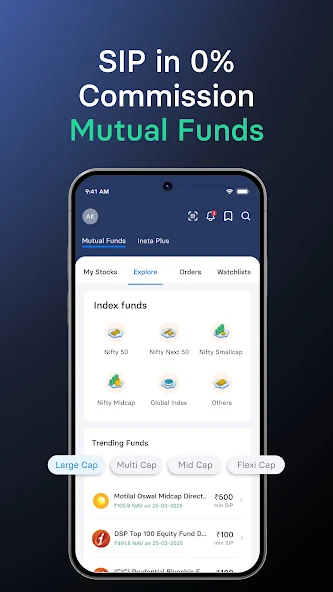The Nasdaq Futures market plays a central role in reflecting investor sentiment toward the technology-driven segment of the broader equity market. For traders and investors alike, tracking these futures can offer insights into expected price movements, especially during pre-market and after-hours sessions. Nasdaq Futures are not just used for speculation—they also serve as tools for hedging and gauging market strength.

As interest in technology stocks grows partly influenced by innovations, economic shifts, and the evolving IPO market, having a clear understanding of the indicators that move Nasdaq Futures becomes essential. Accurate tracking of these signals helps refine trading decisions, reduce risk, and stay informed of market direction.
Understanding Nasdaq Futures
Nasdaq Futures are contracts based on the Nasdaq Index. These derivatives allow traders to speculate on the future value of the index. The contracts are typically used to predict how the market will open the next day or to manage exposure in a technology-heavy portfolio.
While these futures mirror the movement of the underlying index, their values can diverge slightly due to overnight trading activity, global market trends, and investor expectations. Monitoring these changes using well-established indicators provides traders with a clearer path for strategic decisions.
Key Indicators for Analyzing Nasdaq Futures
Technical analysis involves examining chart patterns and statistical indicators to evaluate market trends. Below are some of the most widely used and reliable indicators that traders use to assess movements in Nasdaq Futures.
1. Moving Averages
Moving averages smooth out price data over a specific period to identify the underlying trend.
- Simple Moving Average (SMA): Calculates the average closing price over a chosen period. The 50-day and 200-day SMAs are commonly tracked to identify long-term trends.
- Exponential Moving Average (EMA): Places more weight on recent prices, making it more responsive to current price activity.
Crossovers between short- and long-term moving averages often signal potential trend reversals or confirmations.
2. Relative Strength Index (RSI)
The RSI measures the magnitude of recent price changes to evaluate overbought or oversold conditions.
- RSI above 70 typically indicates overbought conditions, suggesting the potential for a pullback.
- RSI below 30 may signal oversold conditions, pointing to a possible rebound.
RSI is especially helpful in volatile periods when Nasdaq Futures move quickly due to economic data or major IPO market announcements.
3. MACD (Moving Average Convergence Divergence)
MACD is a trend-following momentum indicator that shows the relationship between two EMAs—typically the 12-day and 26-day EMAs.
- The MACD line crossing above the signal line is often considered bullish.
- The MACD line crossing below the signal line can indicate a bearish trend.
It is used alongside volume to confirm market direction and timing.
4. Volume Analysis
Volume reflects the number of contracts traded during a specific period. Higher volume typically signifies greater interest and can validate the strength of a price movement.
- When price increases are accompanied by higher volume, the trend is considered strong.
- If price rises with low volume, it may indicate a weak rally or false breakout.
Volume is especially useful in tracking market sentiment during major IPO listings, which often influence technology stocks and thereby Nasdaq Futures.
5. Bollinger Bands
Bollinger Bands are used to assess price volatility and potential breakout levels.
- The bands widen during periods of high volatility.
- A price touching or breaching the upper or lower band may suggest a continuation or reversal, depending on accompanying volume and momentum.
When the Nasdaq Futures price moves beyond these bands, it often signals the start of a new price phase.
6. Support and Resistance Levels
Identifying historical price zones where Nasdaq Futures have repeatedly changed direction helps predict future market reactions.
- Support is where the price tends to find a base.
- Resistance is where the price faces selling pressure.
Monitoring these levels can guide trade entry and exit decisions and is particularly important when IPO-related volatility influences the index.
7. Economic and Earnings Calendars
While not technical indicators, scheduled events like employment data, inflation announcements, and earnings releases significantly impact Nasdaq Futures.
Additionally, activity in the IPO market, especially among tech firms, can shift futures sentiment. Monitoring upcoming IPOs and their projected valuations helps prepare for short-term index movement.
Combining Indicators for Better Accuracy
No single indicator is entirely reliable on its own. Combining several indicators often provides a more complete view. For example:
- Use MACD with volume to confirm momentum.
- Combine moving averages with RSI to spot trend shifts.
- Check support/resistance levels alongside Bollinger Bands for breakout signals.
Creating a checklist based on these indicators allows for more disciplined decision-making.
Common Mistakes to Avoid
While tracking indicators is important, misinterpretation can lead to poor trades. Here are a few practices to avoid:
- Relying solely on lagging indicators without confirming price action.
- Ignoring volume while analyzing breakout patterns.
- Overtrading based on short-term signals without broader market context.
- Disregarding macroeconomic factors that influence futures overnight.
Maintaining a balance between technical tools and market awareness leads to better outcomes.
Conclusion:
Staying informed about reliable indicators is key to navigating the Nasdaq Futures market with precision. From moving averages to RSI and volume analysis, each tool offers unique insights into potential price direction. When these indicators are understood in context and used together, they enhance forecasting ability and reduce impulsive trading behavior.
Furthermore, as the IPO market continues to influence technology stocks often reflected in Nasdaq index movements, watching these signals becomes even more important. Whether you’re managing risk or aiming for growth, having a structured approach to reading indicators can improve your strategy and confidence in volatile trading conditions.